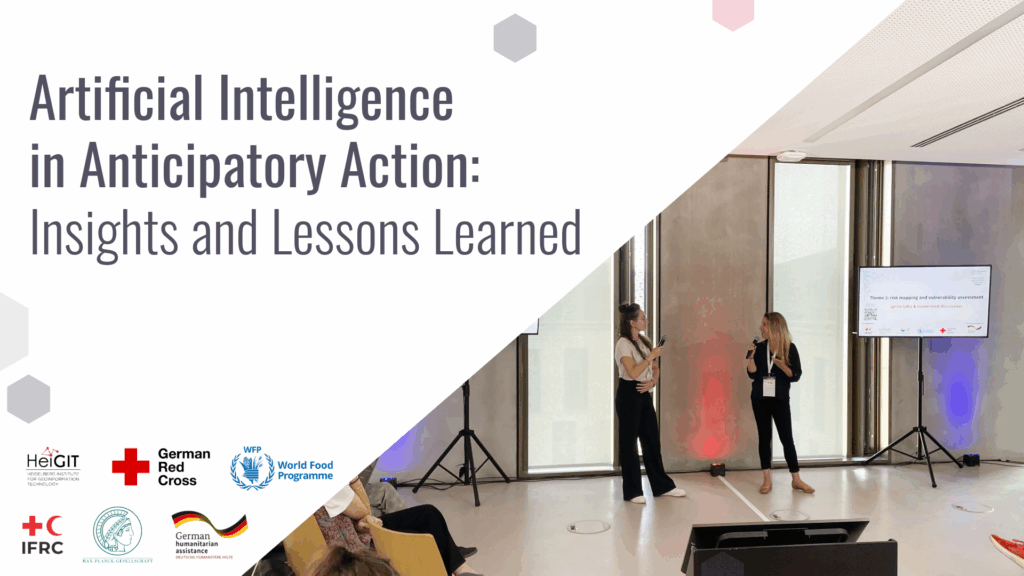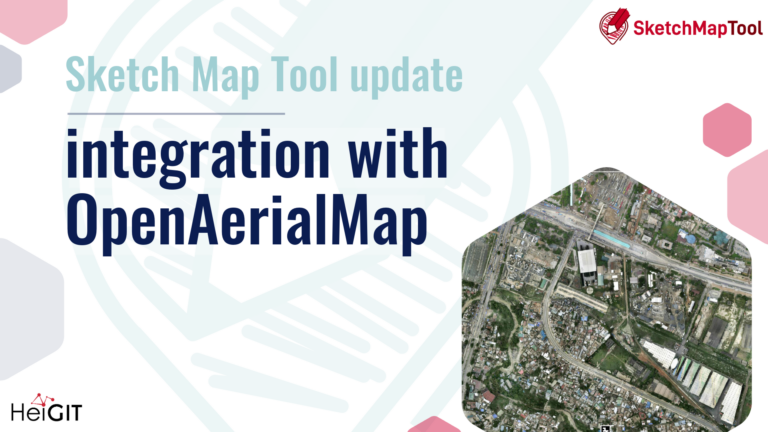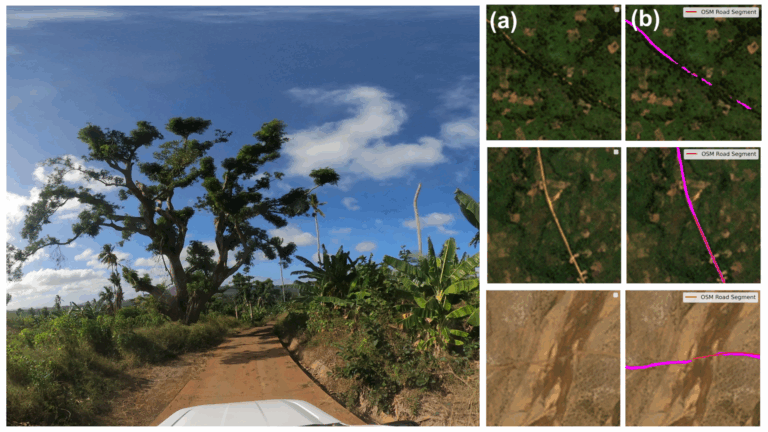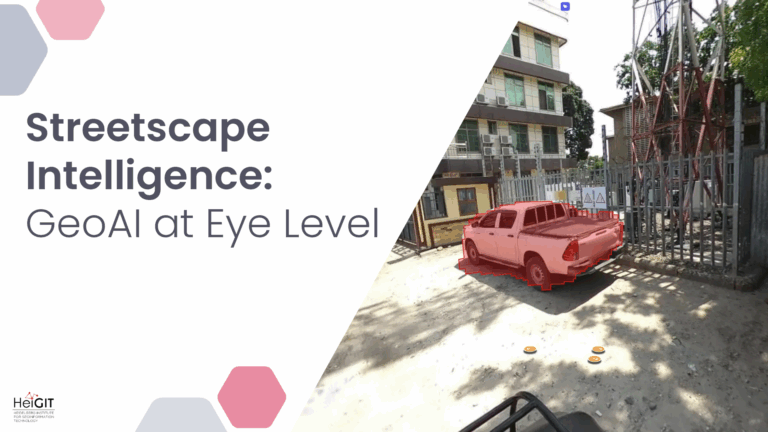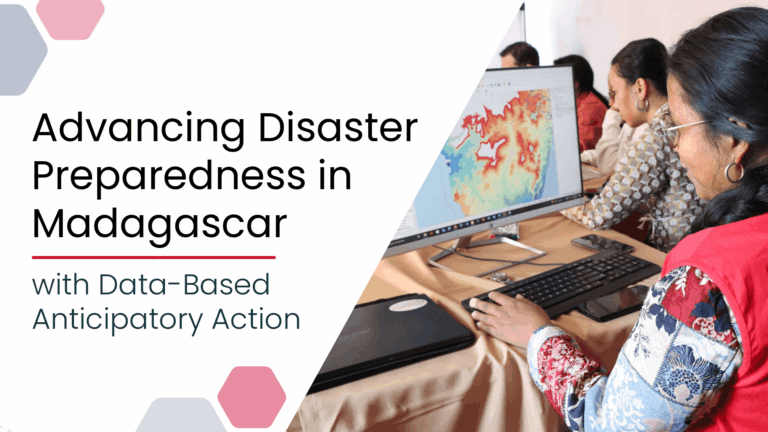Artificial Intelligence holds great promise for strengthening Anticipatory Action by improving hazard forecasting, vulnerability mapping, and decision support, but must be tailored to real-world humanitarian contexts to really be of benefit. A recent workshop brought together practitioners, researchers, and tech experts to identify gaps, share learnings, and explore how AI can be responsibly and effectively integrated into anticipatory humanitarian efforts.
Introduction: Anticipatory Action and Artificial Intelligence
Anticipatory Action (AA) offers a novel and efficient approach within the toolbox of humanitarian and disaster risk management practitioners. Unlike traditional response methods that mobilize resources only after a disaster has struck, AA leverages forecasts and risk analyses to trigger humanitarian measures before an extreme event occurs. The approach has shown to effectively protect lives and livelihoods from the humanitarian impacts of predictable extreme events in a proactive, cost-efficient, and dignified way.
The growing interest in integrating Artificial Intelligence (AI) to further enhance the timeliness, precision, and effectiveness of AA comes as no surprise, given the increasing role of AI in humanitarian decision-making more broadly. Building on this interest, a recent workshop in Heidelberg brought together practitioners, researchers and tech actors to frame AI’s role along the entire AA timeline. The event was co-organized by HeiGIT, German Red Cross, IFRC, World Food Programme and Max Planck Institute for Biogeochemistry under the umbrella of the Anticipation Hub and with financial support of the German Federal Foreign Office.
Over two days, participants exchanged experiences on how AI is already being used in anticipatory action, identified concrete gaps that remain, and discussed ideas for future innovation. A central outcome that emerged was the reaffirmed need for targeted, cross-sector collaboration – including the meaningful involvement of at-risk communities – to ensure that AI-driven solutions are context-appropriate, operationally useful, and grounded in humanitarian realities. This blog summarizes the discussions of the workshop, focusing on three central themes relevant to anticipatory action: “Forecasting and Early Warning”, “Risk Mapping and Vulnerability Assessment”, and “Analysis, Communication and Collaboration”.
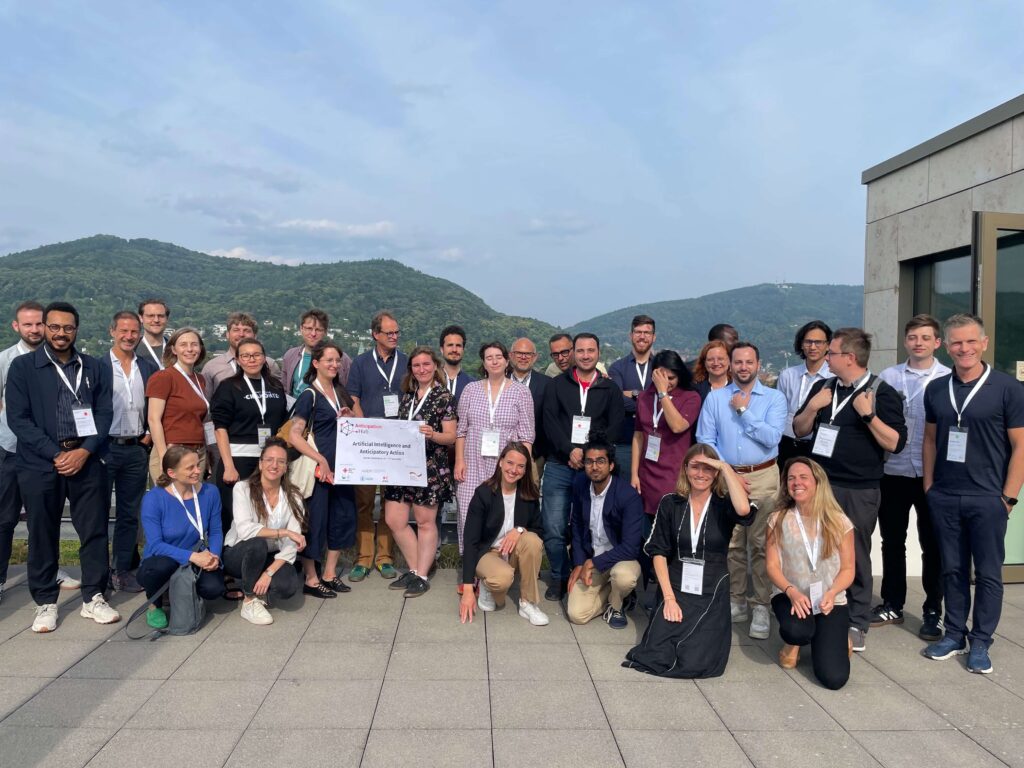
Forecasting and Early Warning: Expanding the Window, Closing the (Data) Gaps
Generative and machine learning models are increasingly being used to improve the accuracy, granularity, and lead time of forecasts for hazards such as rainfall, tropical cyclones, and drought. The more precise and timely these forecasts become, the more room humanitarian actors have to implement anticipatory actions, especially for rapid-onset hazards like flash floods, which have traditionally allowed too little time to act. In short, AI-supported forecasting tools – that are already used in several pilot projects – help to extend the window of opportunity for anticipatory action in contexts where early warnings exist but hazard impacts have yet to fully materialize.
Despite the notable progress in AI-powered forecasting, for anticipatory action to be effective, hazard forecasts need to be linked to the likely humanitarian impacts. While AI can support this shift toward impact-based forecasting – for example, by integrating meteorological and geospatial foundation models – its performance often suffers in data-scarce regions that are affected by conflict or compounding hazards. Strengthening the availability of (locally) validated data, improving access to ground truth observations, and systematically integrating local perspectives is thus key to ensure that growing forecasting capacities can translate into meaningful, impact-based early warnings and decision-making for anticipatory action.
Risk Mapping and Vulnerability Assessment: Going Beyond Data Points
Beyond forecasting, AI and machine learning tools are increasingly used to support humanitarian actors in mapping risks and identifying vulnerable populations. By processing large volumes of historical and real-time data – including satellite imagery – these tools enable more dynamic and fine-grained risk assessments. They can help to rapidly identify or confirm priority areas and communities, assess the structural vulnerability of housing and road infrastructure, or map access to critical services and healthcare facilities. Ultimately, this supports a more targeted delivery of humanitarian assistance ahead of a shock, helping to prioritize increasingly limited resources based on differentiated needs and vulnerabilities.
At the same time, concerns around algorithmic bias, data privacy, and the meaningful inclusion of local perspectives were recurring during the workshop discussion on risk mapping and vulnerability assessment. To address these concerns and to ensure that AI-generated outputs do not reinforce existing power imbalances or historical blind spots, ethical safeguards and human oversight are key: Rather than replacing human insights into risks and vulnerabilities, AI tools hold the potential to complement and accelerate grassroots mapping. Thus, when designed and applied responsibly to support bottom-up approaches, AI can help embed localized, experience-based knowledge into risk models, supporting informed and inclusive anticipatory action.
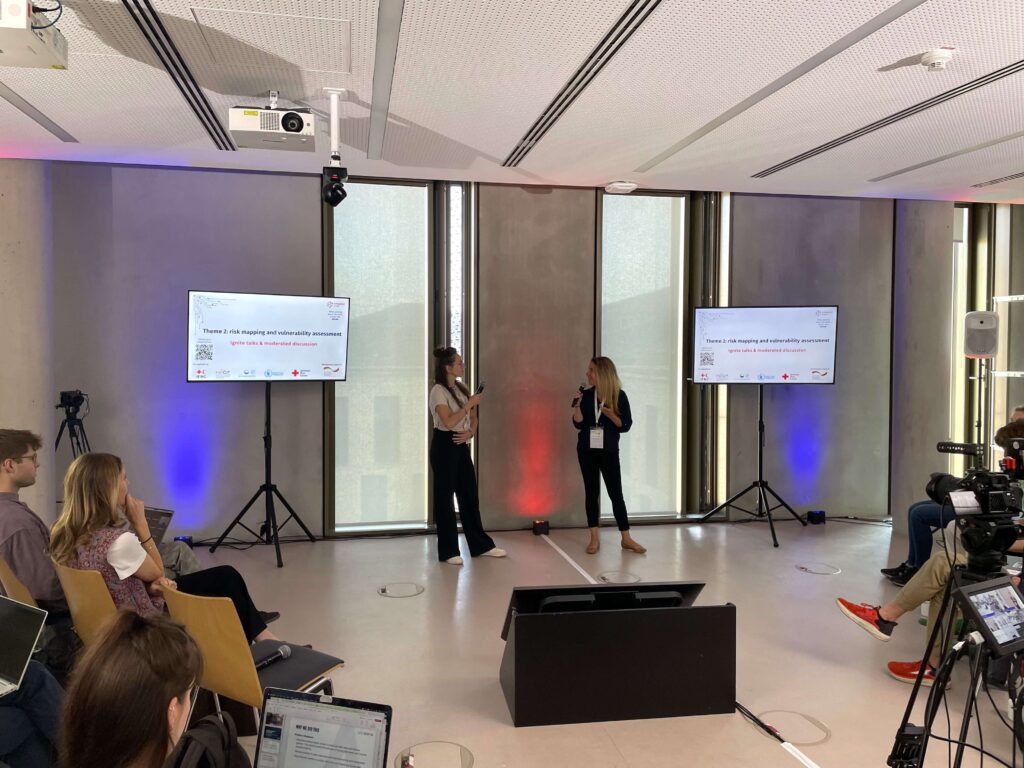
Analysis, Communication and Collaboration: Matching Innovation with Operational Need
AI is not only transforming how risk information is generated and analyzed, it is also shaping how insights are shared, understood and acted upon across the (anticipatory) humanitarian ecosystem. From natural language processing tools that generate multilingual early warning messages, including in minority languages, to large language models that can summarize evolving risk situations in real time, AI is opening up pathways for inclusive, accessible communication around disaster risks and anticipatory action. At the same time, AI holds significant potential for cross-sector collaboration – for example, by drawing on innovations from fields such as logistics, or finance to support faster targeting and verification of beneficiaries. If adapted in ways that are grounded in humanitarian realities, these tools can strengthen planning and improve last-mile delivery of early warnings and anticipatory action.
However, participants also pointed to a number of critical gaps and challenges. One key issue is ensuring that early warning messages not only exist (in the right language), but actually reach the right people at the right time, through the right channels. This requires addressing the persistent data gaps affecting marginalized communities that have been mentioned above and that can introduce systematic bias to AI models. Untapped potential also lies in AI’s role in consolidating learning and operational insights, in further expanding the evidence base on (comparative) advantages of anticipatory action, and in monitoring and documenting compound risks and cascade effects. To make progress on these fronts – including by adapting off-the-shelf innovations from other sectors – more systematic and sustained exchange between humanitarian practitioners, researchers and technology developers is essential: While sporadic touchpoints like this workshop are a valuable start, targeted and long-term collaboration will be essential to match innovation with operational need.
From Dialogue to Delivery: Building a Collaborative Path Forward
To lay the foundations for such a sustained exchange and ensure future innovation in the field is rooted in humanitarian realities, the workshop did not end with reflection. Reiterating the calls for targeted collaboration, a roadmap was developed, linking humanitarians, researchers, and technology developers around concrete gaps and challenges that were identified during the workshop. These include working in data-scarce and conflict-affected settings, improving the integration of local knowledge advancing multi-hazard and impact-based forecasting, and ensuring the ethical design and deployment of AI-supported tools. The roadmap is intended to foster collaboration among workshop participants — and beyond. If you are interested in joining follow-up activities, please get in touch with us via email (humanitarian_gi@heigit.org).
The goal of targeted collaboration and sustained exchange around AI and AA is not necessarily to reinvent the wheel, but to connect the dots: to build on existing tools and experiences, foster mutual learning and awareness, and support the adaptation of AI solutions that meet real-wold needs. This means improving access to relevant data, consolidating dispersed learnings and operational insights, and further exploring opportunities to apply proven innovations from other sectors. At the same time, it also means continuing to ask critical questions about inclusion, accountability, and ethics, ensuring that at-risk communities are not only protected by these systems, but meaningfully involved in shaping them.
This blog article has been jointly written by the partner organizations involved in the workshop.
Questions? Write us at humanitarian_gi@heigit.org. To keep up with future developments and releases related to Anticipatory Action as well as other efforts to advance geospatial technology in the humanitarian aid field, follow our social media channels and stay up to date on our blog.

